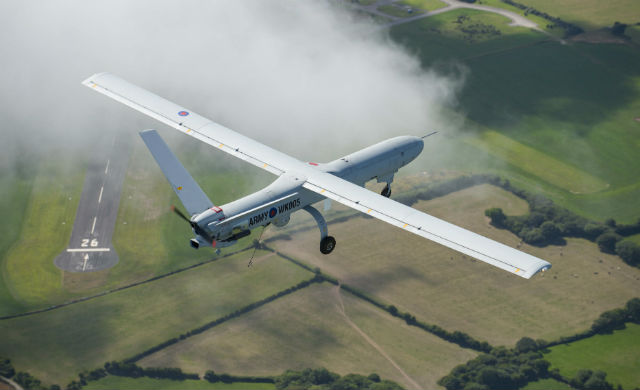The UK Civil Aviation Authority’s unmanned air vehicle lead has expressed disappointment at the lack of UAV operators and developers that are coming forward to test larger systems in UK airspace.
Speaking at the IQPC UAS Training and Simulation conference in London on 10 December, Gerry Corbett conveyed his dissatisfaction in the lack of progress, especially considering that the UK has test facilities to facilitate the integration of larger UAVs.
Corbett is an advocate of safe UAV integration in the UK, and stresses that the airspace is open as long as regulations are adhered to and that safety is at the forefront: “The airspace is ready but the unmanned technology isn’t,” he says.
This includes developing technology that ensures a UAV can operate in the same way as a manned aircraft, and because of the relatively high proportion of uncontrolled airspace in the UK, sense and avoid systems are needed to prevent collisions with other aircraft using the space.
“It’s just that bit of how you deal with the pilot not being in the aircraft,” he notes.
A test site at Parc Aberporth in Wales was established in 2011 to facilitate testing of the British Army’s Thales/Elbit Systems WK450 Watchkeeper UAV, although there has been a lack of tangible interest in testing anything other than the Watchkeeper or small systems in this segregated airspace, Corbett says.
“It is disappointingly underused other than by the Watchkeeper and some of the smaller systems,” Corbett says. “It is there and ready for people to use it.”

Thales
Corbett urges industry and users to approach the CAA regarding other airspace in the UK for UAV testing. If a safety case was put forward, a “temporary danger area” (TDA) could be established that would permit UAVs to fly in certain airspace for some 90 days.
A test site in Llanbedr in Wales was declared operational in October, and should an operator wish to test its UAV there, the CAA has said that in principle a TDA could be granted in order for it to fly from the airfield to restricted airspace via an air corridor that is currently open airspace.
“If the need is great we can cut off any airspace,” Corbett notes. “People just need to come up with the safety case, but people aren’t doing that.”
A flight test in March is expected to see a Watchkeeper fly from Parc Aberporth into the CAA-designated D201 danger zone, and out into unrestricted airspace near Cardiff before rejoining the danger zone.
This comes under the Single European Sky ATM Research programme’s Civil Airspace Integration of RPAS in Europe project, and is being conducted by Thales alongside NATS and the Netherlands’ National Aerospace Laboratory.
There will be no collision avoidance system on board, so Corbett confesses that this is “pushing the boundaries” of the UK’s UAV airspace integration testing, but is “a move in the right direction”.
The US Air Force’s Northrop Grumman RQ-4 Global Hawk high-altitude, long-endurance UAV flew through UK airspace in May during the NATO Unified Vision exercise, when it flew three flights and six transits.
This, according to Corbett, demonstrates that large UAVs can be authorised to fly in the UK, albeit in this case on a one-off basis and at an altitude of 54,000ft that is clear of other traffic.
“I’m pleased to say the flight was dull and boring,” Corbett says, indicating that there were no safety breaches and the flight went according to plan. “It wasn’t exciting by any means, but that was because there is nothing up there and there was no conflict.
“It was very sterile in terms of what we do.”
Corbett says that industry has come forward to test systems in the UK’s dedicated airspace, but in nine out of 10 cases, the interest eventually wanes.
“They have to be safe to fly and be flown safely,” Corbett adds. “The message is to come to us and show us you can do it…. Don’t kill people but don’t kill the industry either.”
Source: FlightGlobal.com






















